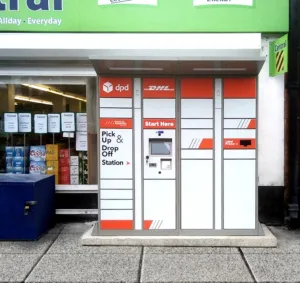by Benoit Boudier, Head of Business Development for Regional Businesses at Worldline
Retail ecommerce sales in Europe totalled €757 billion in 2020 and transaction values of digital and mobile payments in the region have increased by 30% in the last three years; and 2021 is set to be another record-breaking year. The pandemic undoubtedly accelerated this rise, but ecommerce was already growing rapidly. Despite predictions that more shopping would be done in-store in 2021 – as we were all eager to leave our homes after months of restrictions – this did very little to blunt ecommerce’s path to becoming the predominant form of shopping within the next decade. It is time for online merchants to seize the moment.
Master the core pillars of ecommerce
People still want good products at the best prices. However, there have been important changes in the way people shop online. ecommerce is no longer a single-selling experience, but rather a series of touchpoints across various channels to catch shoppers’ attention – all with the end goal that they will become a customer, and hopefully make repeat purchases. Merchants must therefore align all their online and omnichannel initiatives within this new reality.
Zooming in on channels, mobile now accounts for half of Europe’s ecommerce sales, underlining the importance of putting smartphones at the forefront of every ecommerce strategy. This is particularly important at the payment stage, where customers want to input their card details, use mobile wallets or other alternative forms of payment in a few clicks. For example, PayPal has hundreds of thousands of users every day in Europe.
What’s more, the so-called ‘shopping holidays’ have shifted the whole calendar of ecommerce; the last three months of the year have taken on an even greater importance. The introduction of Black Friday and Cyber Monday from the US has seen European ecommerce companies offer significant discounts leading to a surge in orders.
Adapt to the most recent changes from 2021
Even if the explosive growth of Buy Now Pay Later (BNPL) services reduces in 2022 as the sector gets closer to maturity, it represents one of the most important developments in ecommerce in recent years. These services are considered niche, representing only 2.5% of transactions in 2020, but are growing rapidly, with major ecommerce players now offering BNPL options. Since this payment facility could become one of customers’ key purchasing criteria, more merchants are encouraged to consider it.
Subscription-based payments are gaining traction, seeing more than a 400% increase in revenue growth. Guaranteeing the flexibility that ecommerce needs, many businesses – from video streaming services to weekly food subscriptions – use recurring payments. Because of this trend, a growing part of payments is taking place automatically instead of being manually initiated by a customer. For merchants, it represents an amazing possibility to secure and develop revenues.
Brexit has been one of the most significant challenges to online retailing as the scheme fee increased for EU-based merchants selling to the UK. Mastercard adjusted its debit transaction fees on 15 October 2021 from 0.2% to 1.15% and credit card fees from 0.3% to 1.5%. Visa’s fees have also increased and similar charges could possibly be levied against EU customers buying from UK merchants. To help alleviate this, UK merchants selling in Europe are required to either set up European entities – if their business structure justifies it – to bypass the costs or recoup the extra fees by incorporating them into their pricing model.
Card fraud has always been a huge topic, and studies show fraudsters have not remained inactive during the pandemic. Fortunately for merchants, the introduction of new authentication solutions designed to protect online shoppers across mainland Europe (and the UK in March 2022) has not complicated what should remain a seamless payment process. On the contrary, 3DSv2 provided customers with additional peace of mind, encouraging them to complete their online purchase. Merchants just have to make sure their overall user experience is designed to incorporate these changes smoothly, mastering their customers’ end-to-end journeys in each geography.
Prepare for the next road ahead in ecommerce
For the past two years, ecommerce merchants had no choice but to be reactive instead of proactive. They had to rapidly increase their capacity to meet customer demand while also facing the difficulties of running a business during a pandemic. Quick-win solutions such as pay by link, click and collect, BNPL and subscription-based payments have been widely adopted in a short time because they solved immediate challenges, companies must now take charge and focus on their long-term approach.
Consolidating their acquirers and gateways to save costs, and envisaging expansion plans, such as cross-border sales or new product lines, are major strategic changes merchants should consider. When we foresee that digital commerce could rise by 12.7% in 2022, there’s absolutely no doubt that online retailers will soon find themselves in an even more competitive arena. Seizing new consumer trends and investing in innovative technology such as live ecommerce will allow merchants to differentiate themselves from the crowd and offer immersive online shopping experiences. Leveraging the right ecommerce platform and payment infrastructure will facilitate this transformation.










